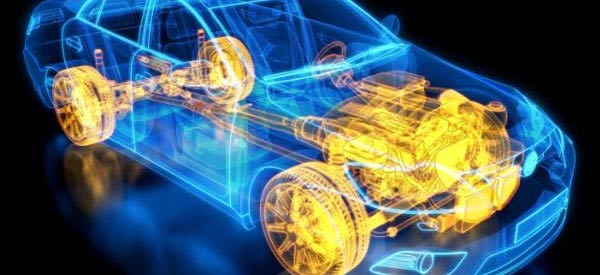The Rise of CFD in Building Internal Combustion Engines of Tomorrow
Posted by: Mehul Patel | Posted on: July 17th, 2014
Despite wide research and development in applying alternatives to internal combustion engines, there hasn’t been any significant acceptance in the global market. With all the downsides of producing emissions, noise and fossil fuel consumption, still even the modern mechanical and automobile industry relies heavily on IC engines. The possible reasons for such an acute inclination are mainly due to the cost-effectiveness and the ability to generate high motive power with sustainability, where electric technology fails to cope up with.
Over the years though, engines have become more eco-friendly, compact and noise-free, as manufacturers are forced to follow stringent norms, leading to aggressive research and innovation.
However, the pursuit of reaching excellence in IC engine technology couldn’t have been possible without the aid of computers. Engine designers extensively make use of computational fluid dynamics to understand the complex combustion phenomenon and the impact of engine components on fluid flow, to perform design modifications or apply innovative design solutions.

Using CFD as a Tool for Manufacturing Benefits
Although every single engine component has been exploited to churn out maximum potential, the use of simulation tools such as CFD has opened ways to take a leap further in designing IC engines of tomorrow.
Businesses, especially automotive manufacturers, look upon CFD as one of the very few tools left to decrease cost, increase revenues and contribute in innovation, as market continues to become more and more competitive.
Predicting Engine Efficiency in Early Design Stages
The ability of modern CFD solvers to simulate the flow behavior is where most engine designers are interested in.
From a macroscopic flow behavior to individual species study, combustion engineers can have enough performance data about the engine to juggle with. This non-destructive testing approach predicts the effects of multiple physics on the engine construction as well as provides ball park information on the amount of harmful pollutant generation.
Interestingly, all these information can be obtained right from the early design stages which directly reduce the number of prototyping test trials required.
CFD as a Third Dimension in Product Design and Innovation
The ability to predict the heat transfer process within the combustion chamber has helped designers to apply innovative approaches in developing engines that outperform even in the extreme thermal conditions.
On the flipside, conventional physical tests haven’t lost their importance, but serve as a source of validating the simulation results. There’s no single approach that designers should rely upon, especially when their prime concern is to promote innovation.
Mathematical calculations do play a vital role in the design process, but with the integration of computational fluid dynamics and physical tests, comprehensive information can be obtained; allowing design engineers to identify unexplored dimensions leading towards innovation.
May be you like to read more about : CFD Analysis for Engine Design: Fueling Innovation
(Image Source: engageni.ac.uk)

About Author: Mehul Patel specializes in handling CFD projects for Automobile, Aerospace, Oil and Gas and building HVAC sectors. He works as a CFD consultant with Hi-Tech CFD for the past 5 years and has successfully executed numerous CFD projects of high complexities. He is an expert in turbo-machinery, gas dynamics, Combustion, Fluid Dynamics, multiphase flow analysis, computational fluid dynamics etc.
